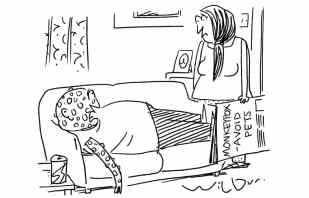‘Deplorable,’ wrote the historian Denis Sinor in 1958 about the state of Hungarian historiography in English. ‘Not only are the interpretations out of date but the facts themselves are all too often erroneous, and a proper name which is not misspelt is received with a sigh of relief by the reader who knows Hungarian.’ That was only two years after the revolution of 1956, when Hungary was on the world’s lips. Today, when the government of Viktor Orbán and the country’s position on Russia and Ukraine makes it equally talked about, this book – from an author born in Budapest in 1956 – is well timed, and its subtitle ‘Between East and West’ pertinently chosen. What is Hungary’s attitude to western Europe, to Russia and to Turkey? Historically it has been subjugated by all three.
Most western democracies are governed by and for their metropolitan elites. Hungary is not. An electoral map shows Budapest as a large, dissenting blob, and since the metro-polis is temperamentally so much at variance with the land of which it is ostensibly the head, it makes sense to give it its own story. Yet despite the (oddly mislabelled) city map with which the book begins, this is not, ultimately, a portrait of Budapest. What we get instead is a history of Hungary.

With its alternating peaks and troughs of supremacy and subjugation, that history describes a sine wave. Geographically, Hungary sits alone among Slavs and Germans, often controlled by others or forced into a liminal role: the bulwark of Romanised Europe against Barbaricum; the buffer between Christendom and the Ottoman empire; the partition rail from which the Iron Curtain hung. It is not always clear where Hungary’s allegiances lie. Her spirit is proudly independent, and she has a tendency to make surprising choices.







Comments
Join the debate for just £1 a month
Be part of the conversation with other Spectator readers by getting your first three months for £3.
UNLOCK ACCESS Just £1 a monthAlready a subscriber? Log in